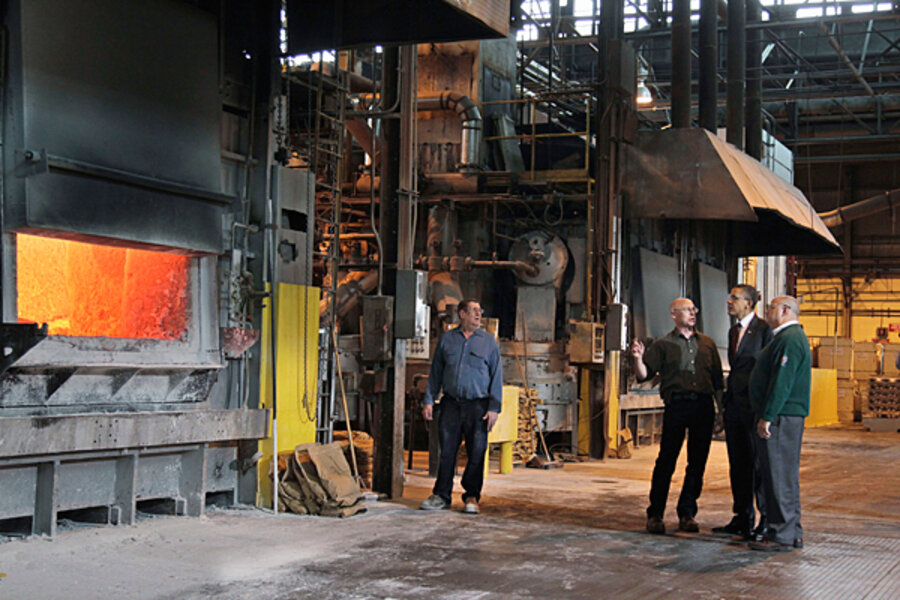Obama's jobs plan: On a collision course with GOP budget cuts?
Loading...
The Obama administration outlined an "innovation strategy" for US job growth Friday, which emphasizes federal economic investments at a time when Republicans are calling for deep budget cuts.
The blueprint follows a State of the Union speech in which President Obama called for America to "out-innovate, out-educate, and out-build the rest of the world."
Although this theme isn't a new one for Mr. Obama, the White House has moved it to the forefront as the president seeks follow-on economic policies after stimulus and tax-cut legislation during his first two years in office. The move also comes as Obama has been trying to rebuild trust with American business.
His pitch: The economy will prosper if industry and government cooperate to improve the climate for entrepreneurship, manufacturing, and advanced research.
The strategy has three broad parts:
• Invest in "building blocks" of innovation, such as education, basic science research, and infrastructure for transportation and communication.
• Promote marketplace innovators through steps including tax incentives and a streamlining of the patent system.
• "Catalyze breakthroughs" in some industries that the administration views as crucial: clean energy, nanotechnology, biotech, and space capabilities.
The last goal is the most controversial, as it could move government more heavily into the role of "picking winners" in the private sector, by pushing funds toward emerging industries.
Elements of Obama's strategy appeal to many business leaders, and economists say the federal government has a long history of helping to lay the groundwork for innovation and jobs. But corporate America is also worried about high federal deficits – and whether runaway spending will diminish America's competitiveness.
Republicans, newly ascendant in Congress, have seized on the fiscal challenge as their emphasis. Even as Obama has made this innovation week (headlined Monday by a new "Startup America" initiative), they rolled out details of a deep spending-cut plan.
Many Republicans hope to roll back discretionary federal spending to 2008 levels, arguing that restraining federal debt is the best way to restore the job-creating spirits of private-sector employers.
The battle is partly over differing economic visions, but it also reflects positioning for elections in 2012. Polls show an anxious public, supportive of government policies that might help create jobs but also eager to halt the rapid rise of national debt.
Obama's position is that fiscal austerity is necessary, but should be imposed gradually as the economy recovers. Investing in innovation, administration officials say, will come in the context of a disciplined, long-term budget plan.
Republican spending cuts in the current budget year would fall in some of the same general categories that Obama hopes to target for investment: transportation, energy, science, and education.
Unveiling a report on the innovation strategy at a news conference Friday, Obama economic adviser Gene Sperling said the policies could create jobs in the present as well as the future. A federal commitment to nurture industries like clean energy, he said, sends a signal to potential job creators "who have cash on the sidelines."
Obama's budget plans, to be released Feb. 14, won't ignore the parallel need of "getting our fiscal house in order," Mr. Sperling said.
The latest national job numbers, released Friday, offered a mixed message on the economy. Although few private-sector jobs were created in January, according to a survey of employers, the US unemployment rate fell to 9 percent.
Even with the improvement in the unemployment rate, the Labor Department tallied about 14 million Americans as unemployed. The budget deficit, for its part, is also daunting: $1.5 trillion this year, according to a recent Congressional Budget Office estimate.
Next week, Obama plans to continue his innovation theme with a visit to Marquette, Mich., to promote improved wireless services that could help exporters and other businesses. Obama's goal is for high-speed wireless service to be accessible for 98 percent of Americans within five years.





